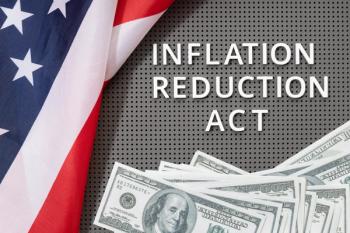
Health Plans Negotiate Different Prices for the Same Procedures
In an analysis from Trilliant Health of 11 inpatient and outpatient procedures, Aetna and UnitedHealthcare had huge variations in rates across the country, across states, and even at the same facility for the same procedures.
Commercially insured patients pay different prices for the same procedures at different hospitals across the country. They even pay different rates at the same hospital depending on their insurance, finds a
The report analyzes data on negotiated rates for 2,659 hospitals and 3,491 ambulatory surgery centers across the United States and the District of Columbia. Trilliant Health researchers analyzed health plan price transparency files published under the
Researchers included these data in Trilliant Health’s health plan price transparency (HPPT) dataset and removed the percent of charge, per diem rates and charges below Medicare’s reimbursement rate. The Trilliant Health HPPT dataset was then used to identify in-network negotiated rates for Aetna and UnitedHealthcare, defined as the amount that a health insurance plan has agreed to pay a healthcare facility for a specific service. Researchers say this likely is representative of 50 million commercial lives and 27% of the insurer market share.
Trilliant Health then assessed facility-level Aetna and UnitedHealthcare rates for 11 inpatient and outpatient procedures. They found huge variations across the country, across states, and even at the same facility for the same procedures.
Researchers focused on Aetna and UnitedHealthcare because they are two of the largest national payers, covering tens of millions of commercially insured Americans. But the findings are not unique to these two insurers, and they reflect a systemic problem in commercially insured negotiated rates, Allison Oakes, Ph.D., vice president, chief research officer at Trilliant Health, told Managed Healthcare Executive.
“By comparing rates between these two payers, we can illustrate how much variation exists between payers, even at the same facility,” she said. “We consistently see wide differences in rates across payers, providers and procedures.”
She said Trilliant Health selected these procedures because they represent a significant amount of healthcare use in the commercially insured population, reflect variation in service intensity and capture services that can be provided across care settings. In addition, CMS defines several of the codes as “shoppable services.”
"Focusing on representative, high-volume procedures helps expose the problem in a way that’s tangible and easy to understand," she said. "In many ways, this report is just the tip of the iceberg, but the results and conclusions are generalizable."
Procedures with Differences in Price
As an example of the price differences across the country, Trilliant Health researchers cite the median rate for a coronary bypass without cardiac catheterization (MS-DRG 236) as $68,194, but negotiated rates range from $27,683 to $247,902, an absolute price difference of $220,219. The two insurers studied by Trilliant Health negotiated rates for 2,258 short-term acute care hospitals for coronary bypass, with Aetna having 1,124 different rates and UnitedHealthcare having 1,971 different rates.
In another example, Trilliant Health assessed rates for 2,230 short-term acute care hospitals for major hip and knee replacement (MS-DRG 469). They found that Aetna had 1,008 different rates and UnitedHealthcare had 1,988 different rates. Nationally, the median negotiated rate for this procedure was $50,564, ranging from $22,011 for St. David’s North Austin Medical Center in Austin, Texas, to $197,057 at Hackensack University Medical Center in Hackensack, New Jersey.
As an example of different rates for the same procedure at the same hospital, Trilliant Health cites a coronary bypass without cardiac catheterization with major complications or comorbidities (MS-DRG 235) performed at Tufts Medical Center; the Aetna negotiated rate is $95,989, while the UnitedHealthcare negotiated rate is $144,204, an absolute difference of $48,215 for the same procedure at the same facility.
Additionally, across the five outpatient surgeries that were examined, the national median surgery center rate was always lower than the median rate for hospital outpatient departments.
The analysis also found that within a sample of 10 hospitals that have been featured on various “best hospital” lists, there was no correlation between aggregate measures of cost and quality.
"These examples are not outliers. Rather, they reflect a broader pattern and problem. The one thing that you can count on in the health plan price transparency data is variation," Oakes said. "This variation exists because commercial negotiated rates have been a closely guarded trade secret for decades, protected by confidentiality clauses and antitrust regulations. Because of this information asymmetry, providers and payers have not had to compete on price, which leads to unwarranted variation and wasteful spending."
She said this information on rate variation is important for employers because control roughly 30% of national health spending, which gives them enormous leverage. "By demanding transparency from benefit brokers and health plans, they can inaugurate a new era of value for money in the U.S. health economy, in which payers and providers are forced to compete on value."
For policymakers, she said that bad facts make bad policy. "First, it is imperative that they start using the Transparency in Coverage data, which allows for real-time analysis of hospital and non-hospital rates for individual procedures at individual providers. Second, policymakers need to focus on real dollar amounts and absolute price differences rather than relying on proxies or ratios. When the right data is combined with the right approach, systemic change becomes possible."
This story was updated to include additional information from Trilliant Health.
Newsletter
Get the latest industry news, event updates, and more from Managed healthcare Executive.






















































